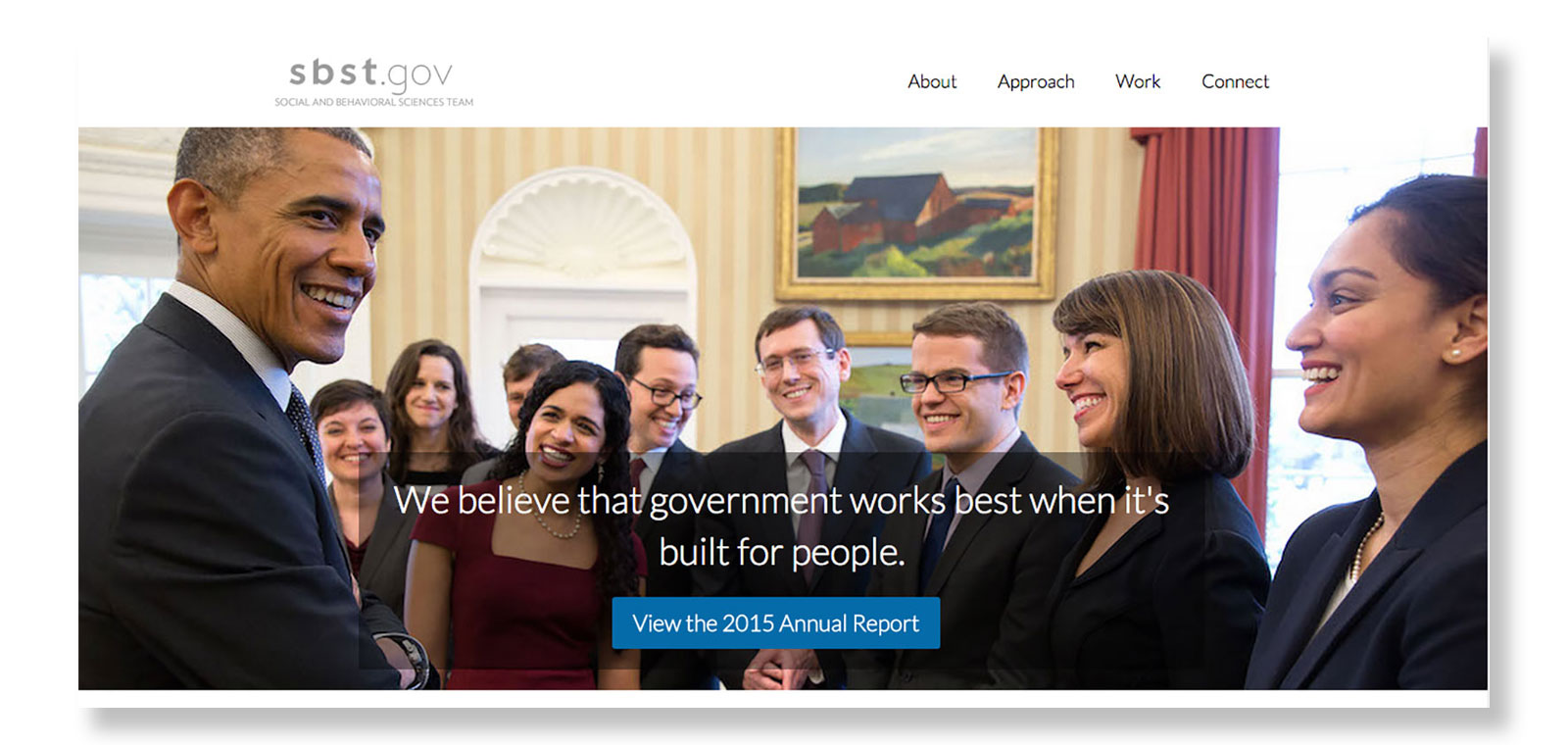
Summer 2017 Update: Federalist left beta in June 2017 and is currently seeking new customers. Email us at federalist-inquiries@gsa.gov or fill out this Google form if you’re interested in using Federalist for your office.
Today, the White House Social and Behavioral Sciences Team (SBST) launched their new website.
What may not be apparent from looking at SBST’s site is that it was built using 18F’s new Federalist platform (currently in alpha release), a suite of tools designed to make it faster and cheaper for government agencies to build websites that are secure, responsive, and accessible.
You can think of Federalist as the glue that ties a lot of already-existing platforms together. Federalist automates common tasks for integrating GitHub, a content editor, and Amazon Web Services, providing a simple way for developers to launch new websites or more easily manage existing ones. (The platform also supports Microsoft’s Azure through open source contributions.)
18F developed Federalist for two audiences: federal developers who need a platform for reliable, quick hosting of static sites, and federal groups that may not have a developer on staff but need secure, accessible, and responsive websites to get their content out to the public.
Federalist users will be able to create new sites from a suite of well-designed templates and won’t need any technical knowledge to edit their pages. The platform includes a content editor designed for simple, Section 508-compliant content creation, and eliminates the need for expensive development and design efforts.
“Federalist provides a way for people who are creating this information to get it out to the public quickly and easily, and edit it when they need to,” says Gail Swanson, the lead researcher and designer on the project. “It allows them to build a site that is accessible for people on mobile, 508 compliant, and secure.”
Simple and compliant
Federalist is designed to be simple. Each site comes equipped with templates that make it easy for content creators across the federal government to focus on what they do best: creating content. Once the text has been written, images uploaded, and a page published, the outward-facing website will be fast, reliable, and easily scalable.
The platform uses the same scalable content delivery strategy that was developed for NotAlone.gov and healthcare.gov and puts that power into the hands of every federal agency that uses the platform. Over the weekend, President Obama launched the College Scorecard, which “empower[s] Americans to rate colleges based on what matters most to them.” To meet the expectedly high demand, the College Scorecard launched on Federalist as a static website with a custom-designed template.
“This is a platform that’s as easy to use as posting to a social media site, but has the flexibility and scalability that the federal government requires to manage humongous traffic,” says Swanson. “If the government needs to put out a text-heavy document, it can do that. If there’s something that has videos and illustrations, it can do that too.”
Working with SBST to build a better platform
The SBST team approached our team in early June and said they wanted a website built for mid-September. At the time, the Federalist platform existed, but was a very simple version of the way it works today.
Over the past three months, we’ve worked closely with the SBST team. Their input and feedback have been invaluable and helped inform both the design and development of the Federalist platform. We were able to validate what worked - and what didn’t work - with real users who tried the platform out from its very first days. We listened to their feedback and worked with them to refine our software to meet their content creators’ needs. We couldn’t have asked for a better (or more patient) partner, and we want to thank the SBST team for working with us in real-time to build a better product.
Working with SBST also surfaced the need to create tools and guides that would help users on our platform. To assist people getting started with a new website, we made the Federalist Content Guide for writers who will use the platform to create departmental websites and share information about their teams.
Why static?
Federalist is designed for publishing static government websites. Whereas dynamic websites generate their content every time someone visits the page, static websites are delivered to users exactly as they are stored on a server. Dave Cole, the lead developer on the project, has written extensively about static sites, and how they can help make websites cheaper, faster, and more reliable. Federalist uses features already offered in GitHub to store and manage content.
“Rather than building a custom CMS from scratch, Federalist puts a layer on top of an open source platform which already has proven scalability,” says Jeremia Kimelman, a developer on the program. “That’s one of the great things about this platform.”
How to learn more
If your agency or department is interested in using Federalist, we’d love to talk to you more about the platform. Visit https://federalist.18f.gov to get started.

